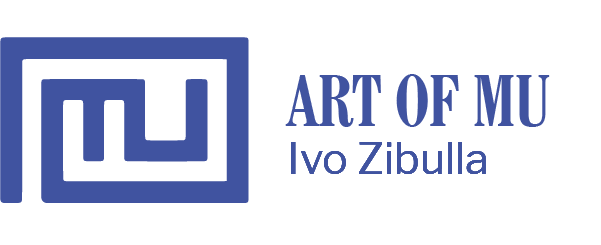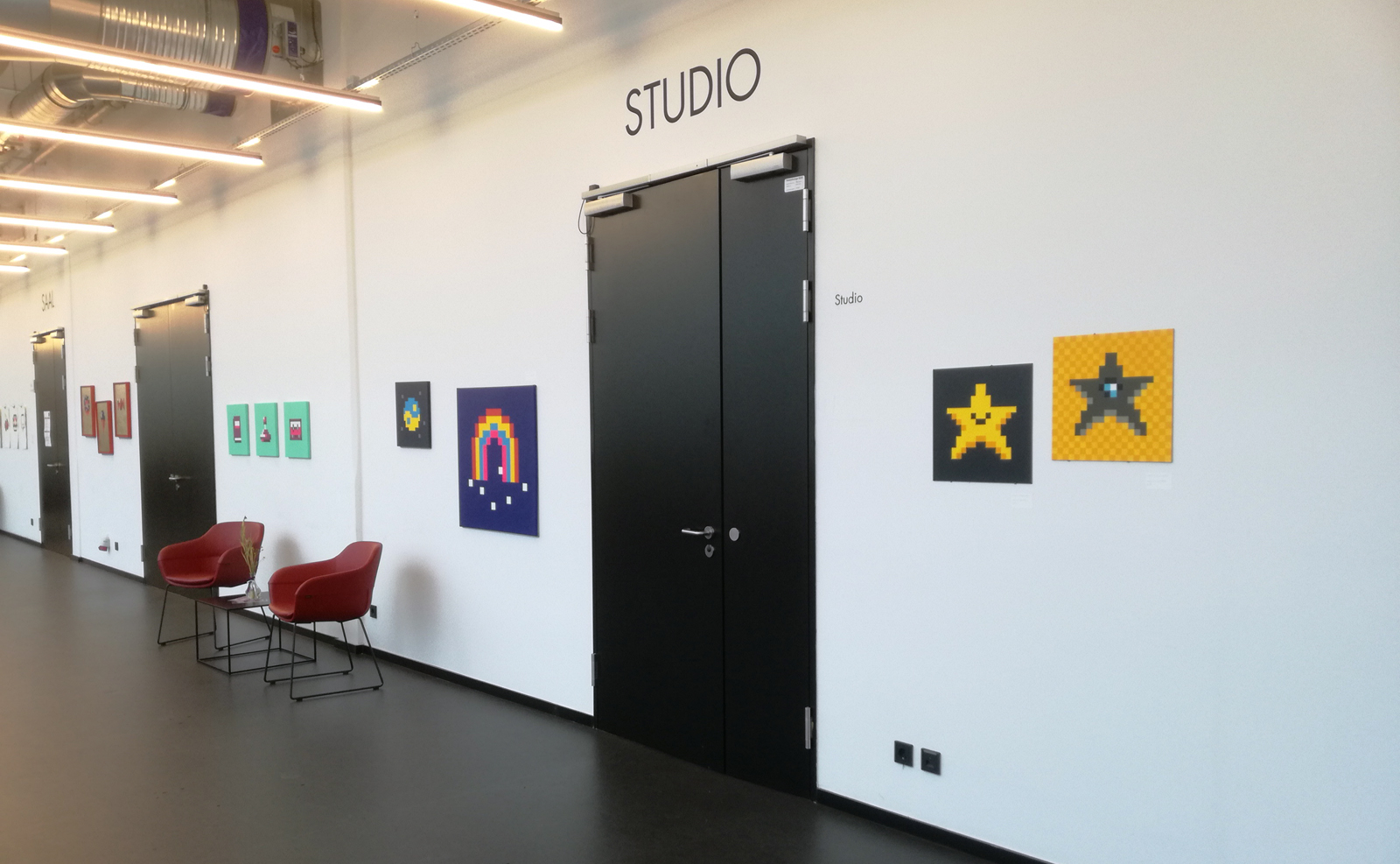Higher realms of concepts, ideas and terms can only be personally understood and represented after being transfered into language. I struggle with the subtle pride instilled in our education system and cultural heritage, by anyone bearing Truth, be it ancient secrets or scientifically proven, with all this information which is noted down by someone and considered to be taken for real. I found peace in creating personal interpretations of that so called knowledge, this cloudy substance of thought.
Wundern (to wonder) is a medium sized square acrylic painting on canvas. An abstract symbol made of four curved lines and some scattered white pixels are shown on a ultramarine ground. The colors of the lines are arranged as the colors in the electromagnetic spectrum. As the title of the painting suggests, the phenomena displayed is a frame-frozen process: a rainbow, a portal, a radiant glow.
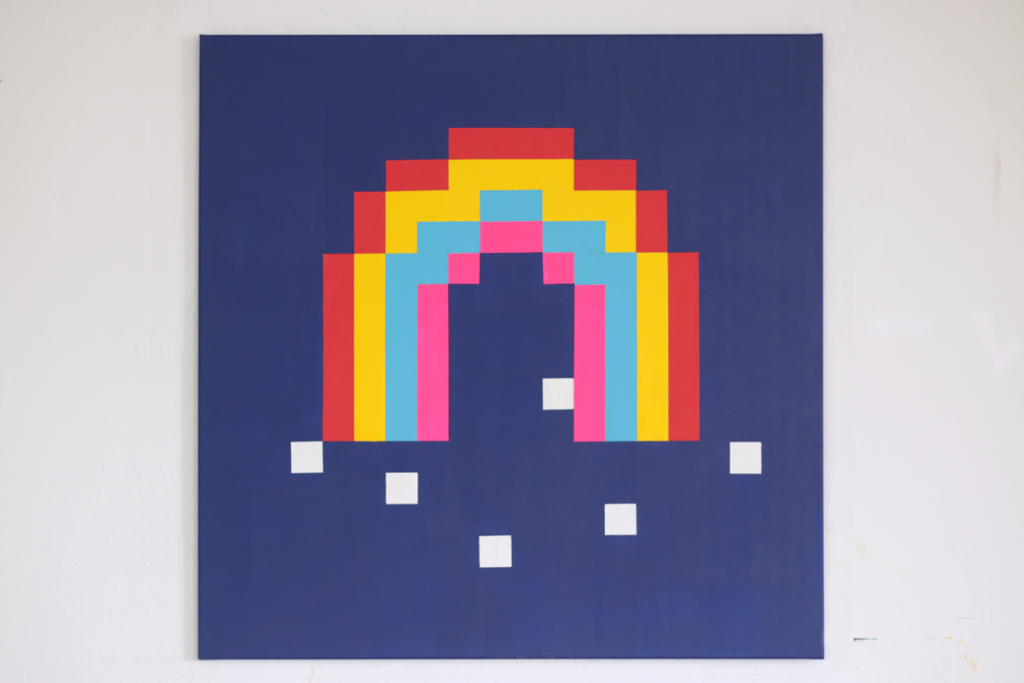
Wundern, 80 x 80 cm, 2018.
An/Aus and the other two Hin/Her and Für/Wider are three acrylic paintings on wood pair from the works Formen der Energie. While each painting uses the same basic pixel configuration, the orientation and the color set of the images are different. The three works experiment on the possibilities to abstract physical and conceptual processes by simplifying visual expression by also reducing the resolution of the image as much as possible.
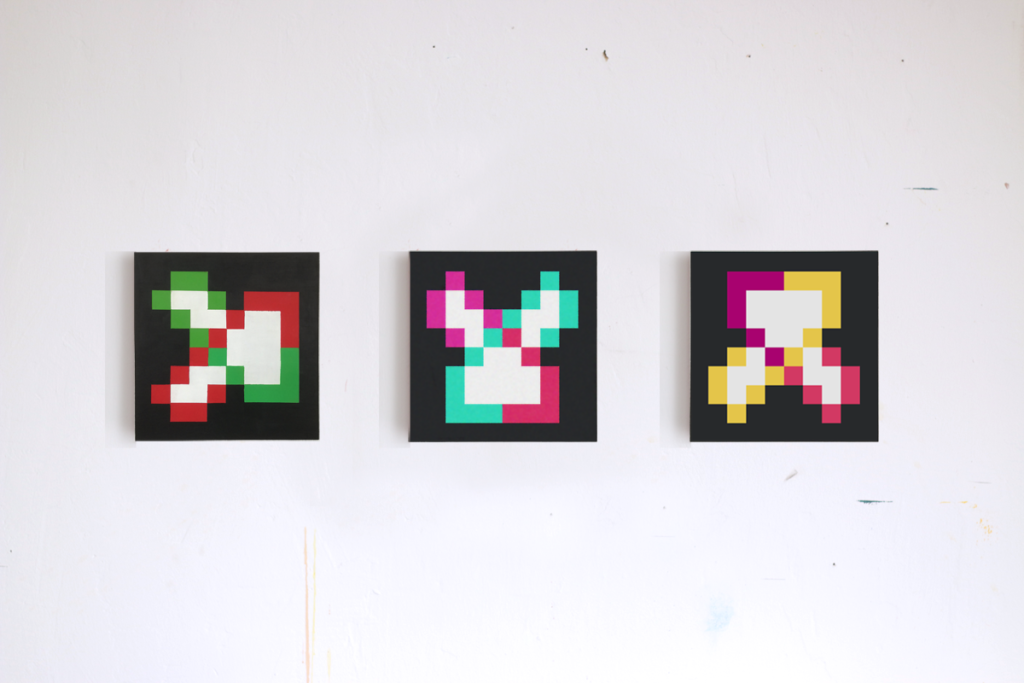
An/Aus, 20 x 20 cm, 2019 – Für/Wider, 20 x 20 cm, 2019 – Hin/Her, 20 x 20 cm, 2019.
Hoffnung vereint (hope unifies) is an acrylic painting on canvas in a 3:1 horizontal ratio, split into three equal zones. Centered in each zone, a magnifying lens is placed. The three lenses are identical in composition. Through the switch of the color placing of the pixels, each lenses achieves a unique appearance. In comtemporary iconic language, the magnifying lens is globally used as the symbol for digitally searching information. Even though as accessible information grows at ridiculous rates, user never despair by looking for their specific answers. This hope unifies all of us in this current changes of our societies, thus this work being a comment on positive transformation.
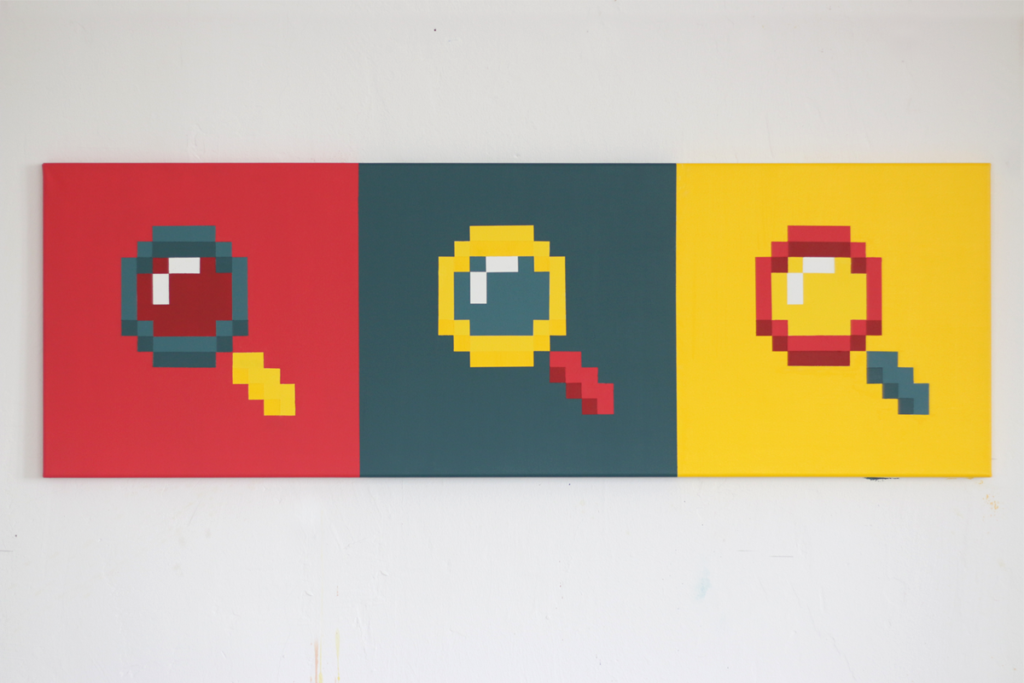
Hoffnung vereint, 120 x 40 cm, 2019.
Eigenschaften (attributes) currently consists of three individual acrylic paintings on wood. Within this paintings, i use well known media items that are considered outdated in the depicted form due to technological progress. The colors and motifs evoke a feeling of nostalgia, for a time where technological artifacts were obvious recognizable. The paintings each shed a light of curiosity to psychological human attributes/conceptual categories.
Erfahrung (experience) shows a closed book with an empty name tag, a diary. Experience can only be accumulated by living, therefore it is a temporal progression as is reading and writing. Each experience is unique.
Persönlichkeit (personality) represents a classic joystick used during the late 70s and early 80s of the 20th century. This interface was used to control the player representation (character) in any of the early video games, therefore transfering the personality of a gamer into playing style.
Charakter (character) displays a tape, an media which was mainly used to record and replay soundfiles during the 80s of the last century and now is no longer in general use. Tapes were made of a long plastic film with magnetized coating. By continuosly rotated mechanically, the coating wore off and the film got stretched up until it became sloppy to the point, that it could no longer meet the intended use.
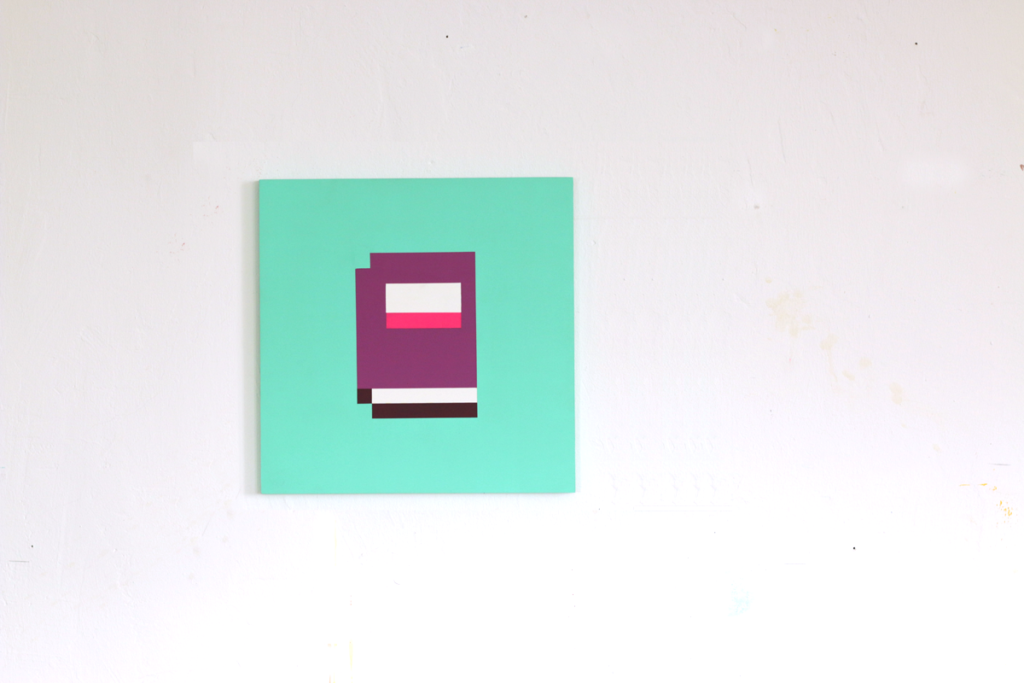
Erfahrung, 40 x 40 cm, 2019. 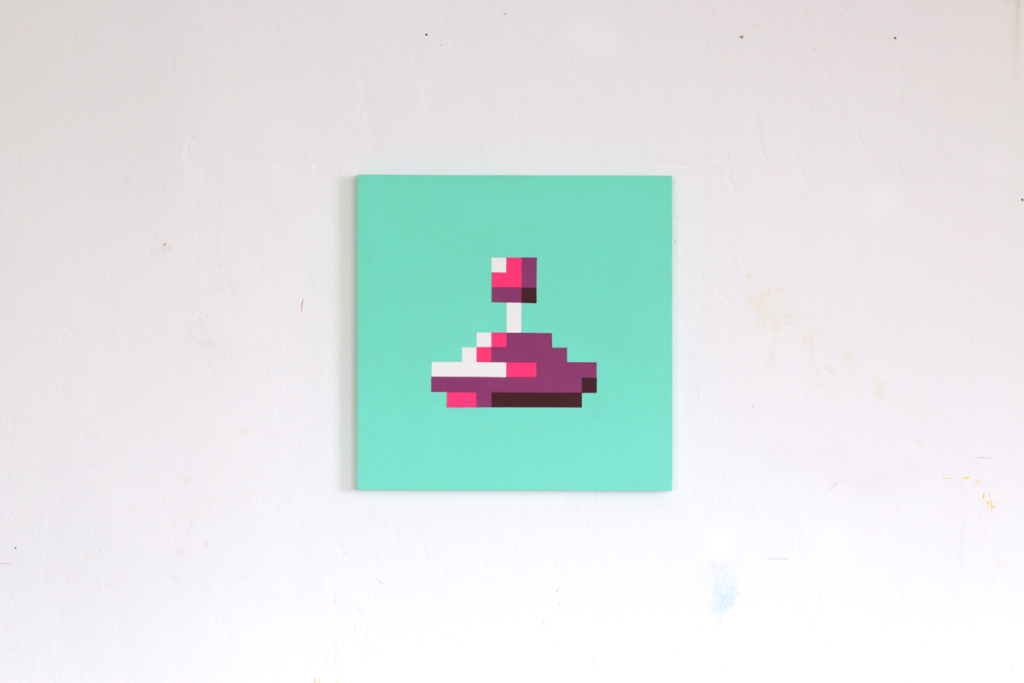
Persönlichkeit, 40 x 40 cm, 2019. 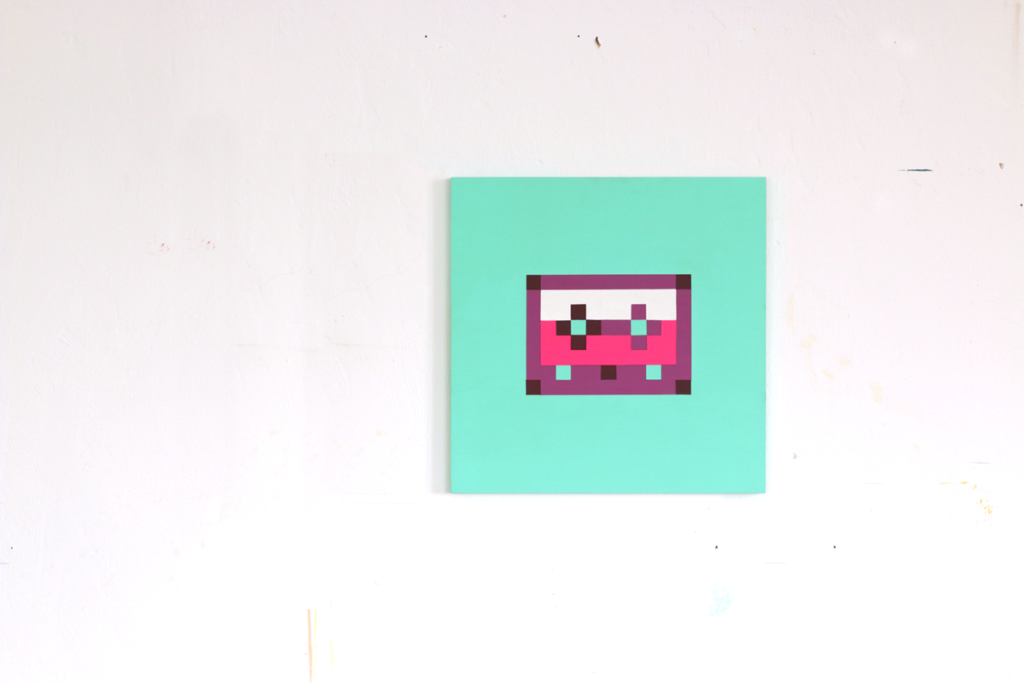
Charakter, 40 x 40 cm, 2019.
Geisteshaltung (mindset) is a collection of paintings about basic approaches towards life from an internal viewpoint. It consists of three separate acrylic paintings, all of them named after an active process rather than a fixed position.
Angreifen (to attack) shows a short-sword – the single most used item in videogames for performing a melee attack. The swords are a highly diverse class of different weapon types, thus perfectly symbolizing the diversity of the different ways humans try to keep the complexities of life away at safe distance.
Attack is to act before being acted upon. To lead before being led. It cannot endure witnessing another perspective. It can be a lonely, tiresome approach.
Verteidigen (to defend) similarly uses a well known item: the shield. As shields can also be used for attacking their main purpose is to protect by deflection.
Defending ist to stay out of harms way. To keep a safe distance between oneself and life. It always reacts, even if it acts before being acted upon. Defending cannot endure the uncertainty of other perspectives. It might be considered an being-absent approach.
Integrieren (to integrate) uses a lesser known symbol: a volumentric beaker containing a liquid. The symbol was widely used in early role-playing games (mostly medieval- or phantasy-themed) due it is easy recognizable in low resolution. Historically, glass was too rare to be used as a bottle.
Integrating is to quaff the liquid, to invite and absorb the outside perspective until it may become a new aspect of oneself, not knowing what will be the potential outcome.
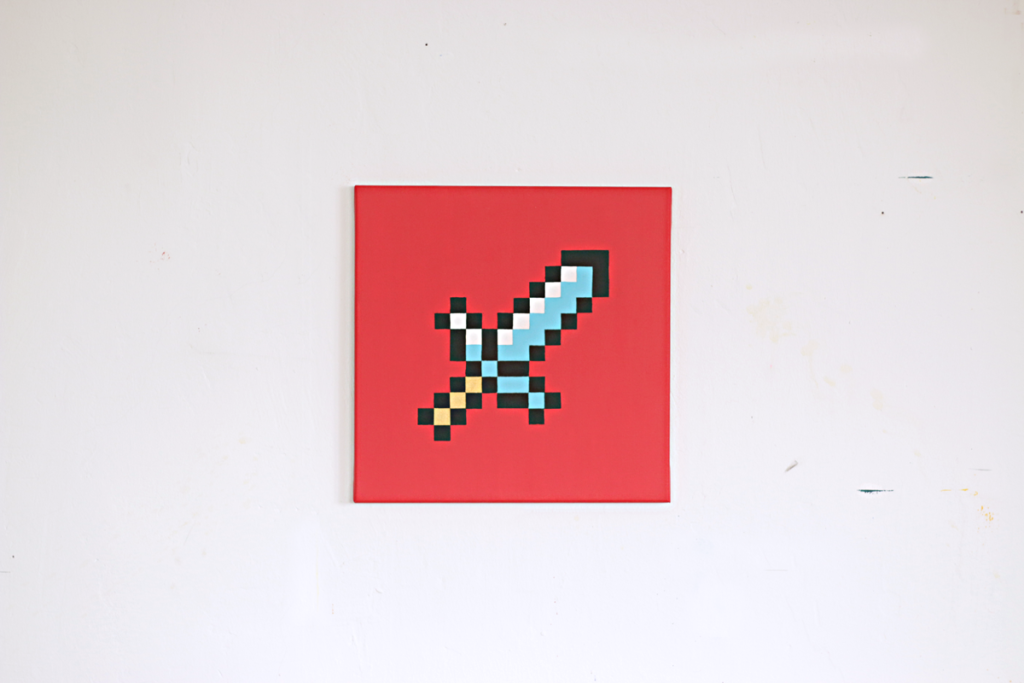
Angreifen, 40 x 40 cm, 2018. 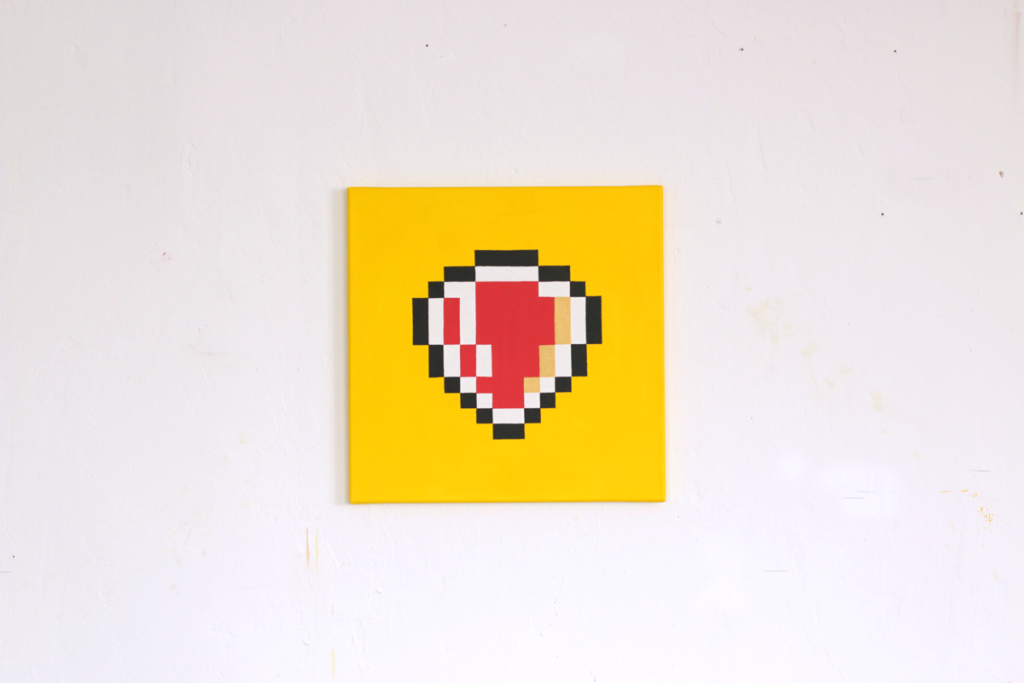
Verteidigen, 40 x 40 cm, 2018. 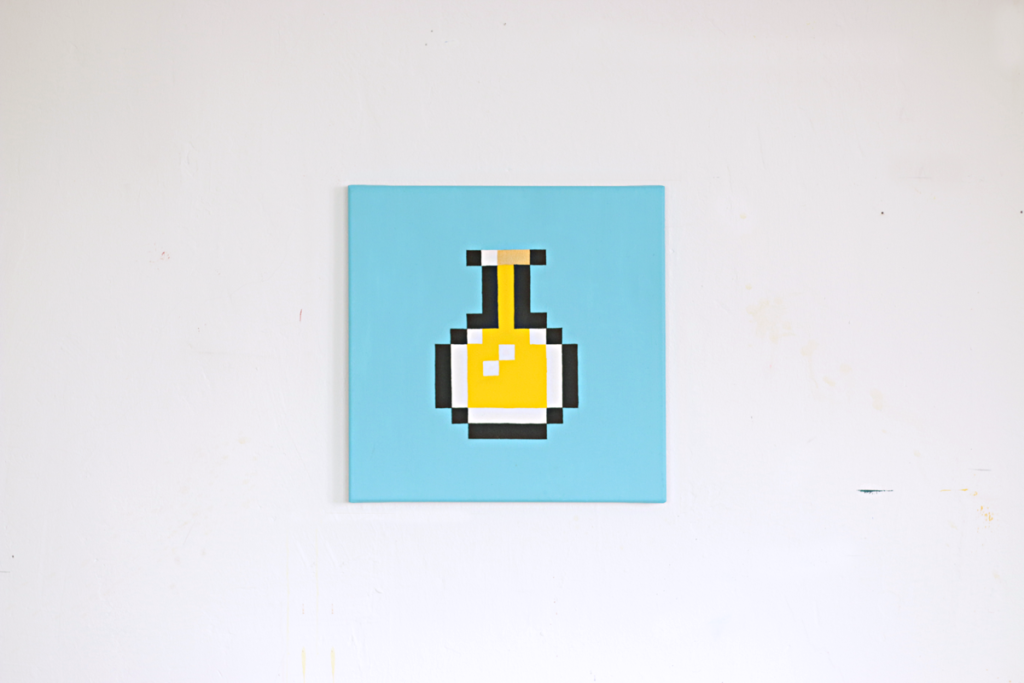
Integrieren, 40 x 40 cm, 2018.
Block Series is another approach to emotional and rational processes by quoting all those famous little blocks that made early videogame worlds full of surprises.
Verletzlichkeit (vulnerability) is a work about tender curiosity and a reminder for an open-heart approach towards life. The painting shows the Question-Mark block, an in-game element of the Super Mario Franchise. Hitting the block with the character can have multiple results from boon to desaster – with the beauty of never fully knowing what to expect.
One of the major advantages of becoming of age is achieving knowledge. At the same time this is also a trap: reflecting on any giving situation based on experience is splitting oneself from the immediate experience. This psychic protection mechanism is generally helpful. If not observed carefully by oneself, it might get into auto-mode and can slowly turn anyone into a detached human being.
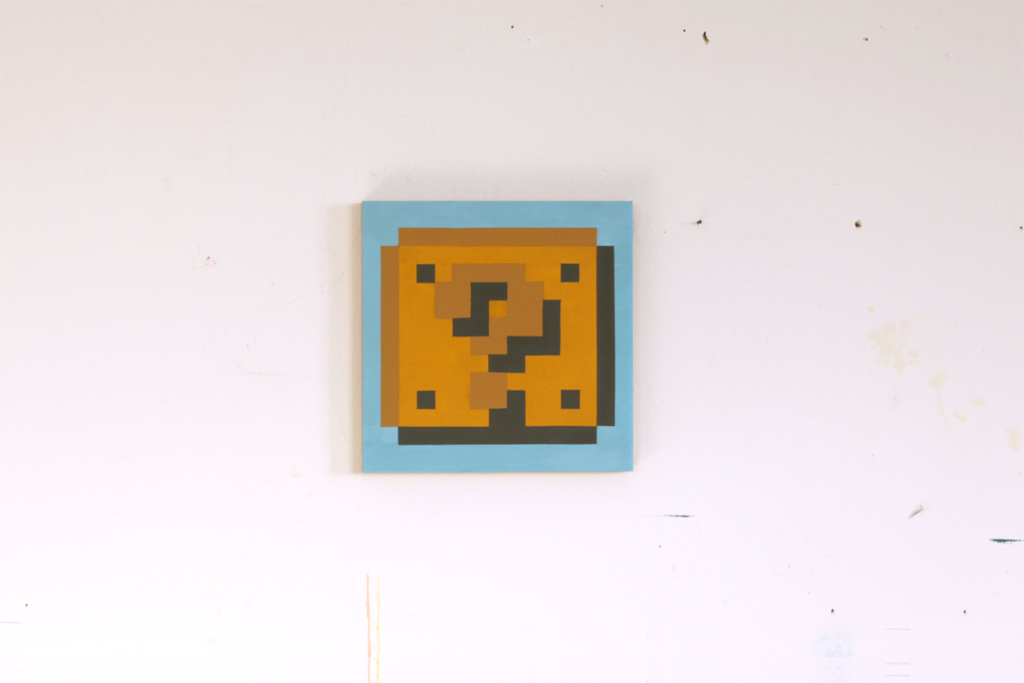
Verletzlichkeit, 30 x 30 cm, 2019.
Öffnung/Begegnung (opening/encounter) is an acrylic painting showing a 12 x 12 pixel piece of abstracted brickwork. This sprite is used as the boundary of the in-game area in the video game Tetris, originally developed and released in the USSR in 1984. Five years later, a japanese video game company named Nintendo released the first globally succesful handheld-arcade console: the Game Boy and distributed it with one game: Tetris.
In the same year 1989, the German Reunification Process happened by opening of the Berlin Wall on November 9th and ending on October 3rd 1990 thus ending the existence of the German Democratic Republic (GDR).
The piece reflects about the success of capitalism over socialism (a less radical form of capitalism) opening up the country to a globally interconnected world and a cultural phenomenon called video games.
On a personal level, the piece is proof that the trauma of severe identity loss could be redirected in a constructive way by playing.
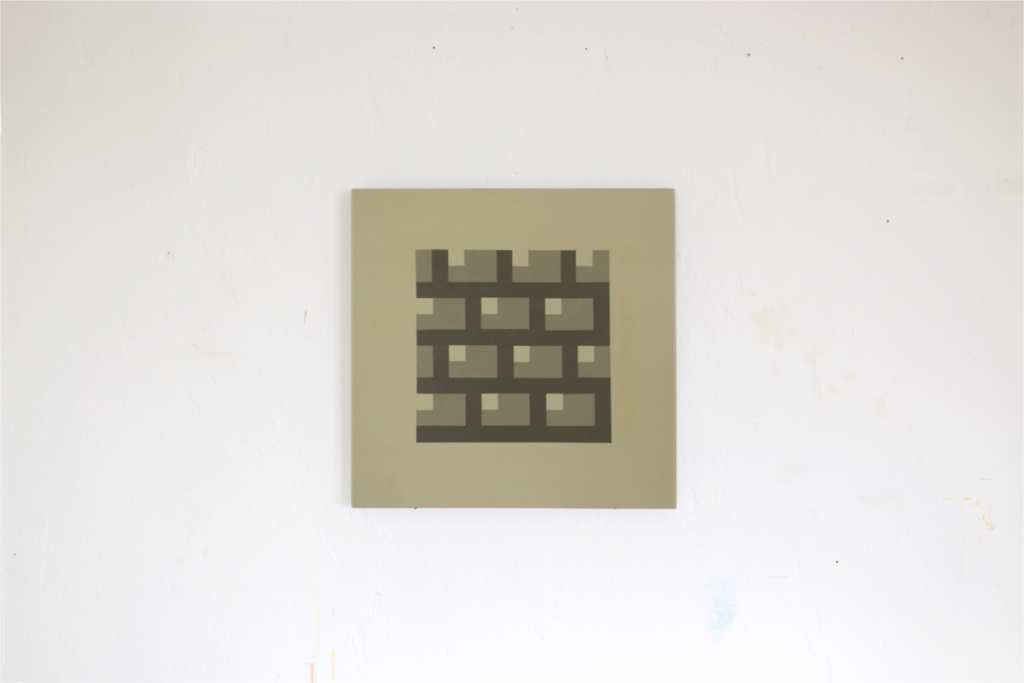
Öffnung/Begegnung, 40 x 40 cm, 2018.
Freier Wille (free will) is another work in the Block Series. The power of free will is considered the single strongest force the in human mind and the multi-tool of reason. It also is difficult to handle. The chosen symbol of a side-scrolling 2D bullet character from Super Mario Bros. deliberately questions this given importance. It is a deadly projectile if being hit by it, it is easily avoidable due to its predetermined and restricted path.
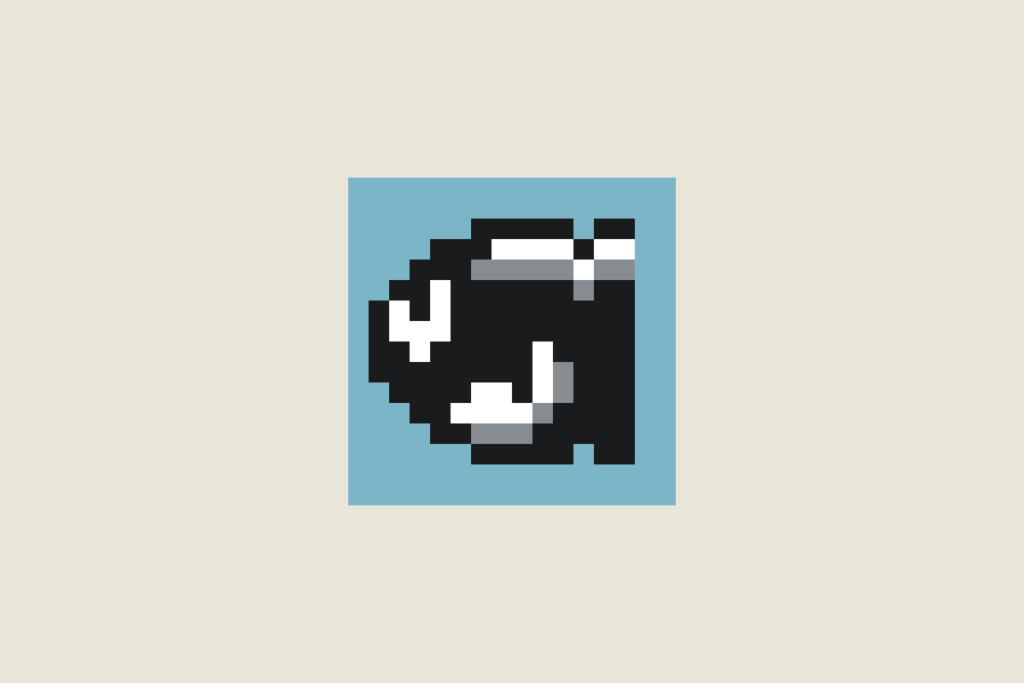
Freier Wille, digital sketch, 2020.
Pacmocalypse is a tetraptych about the subject of the Apocalypse. It consists of four separate acrylic paintings on wood: Sieg, Krieg, Hungersnot und Tod. Each painting represents one of the four Riders of the Apocalypse by quoting one of the four adversaries of the most successful arcade video-game hero in the early 80s: Pacman. Low-res characters are transfering mystical human knowledge about cycles of peace and war from religious context into a modern pop-cultural language.
This is done by using the same visual restrictions: each theme originally is visualized by a skeleton rider on a colored horse (victory = white horse, war = bloody horse etc.). The four ghosts from the videogame using specific movement patterns that represent corresponding behaviours (agressive = war, sluggish = famine etc.)
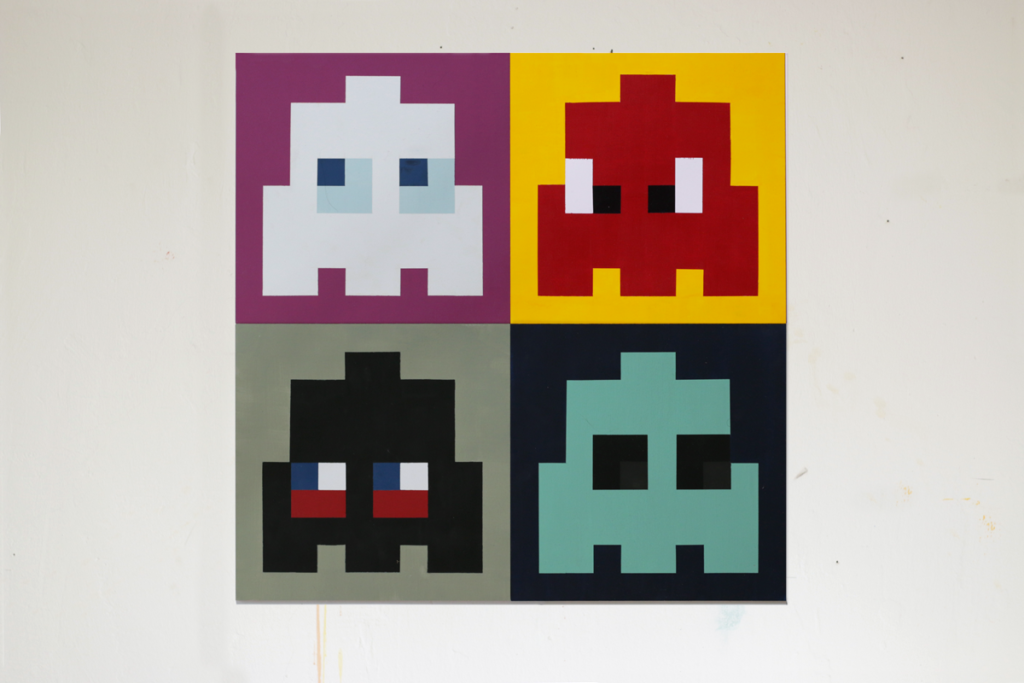
Pacmocalypse, complete tetraptych, 60 x 60 cm, 2019. 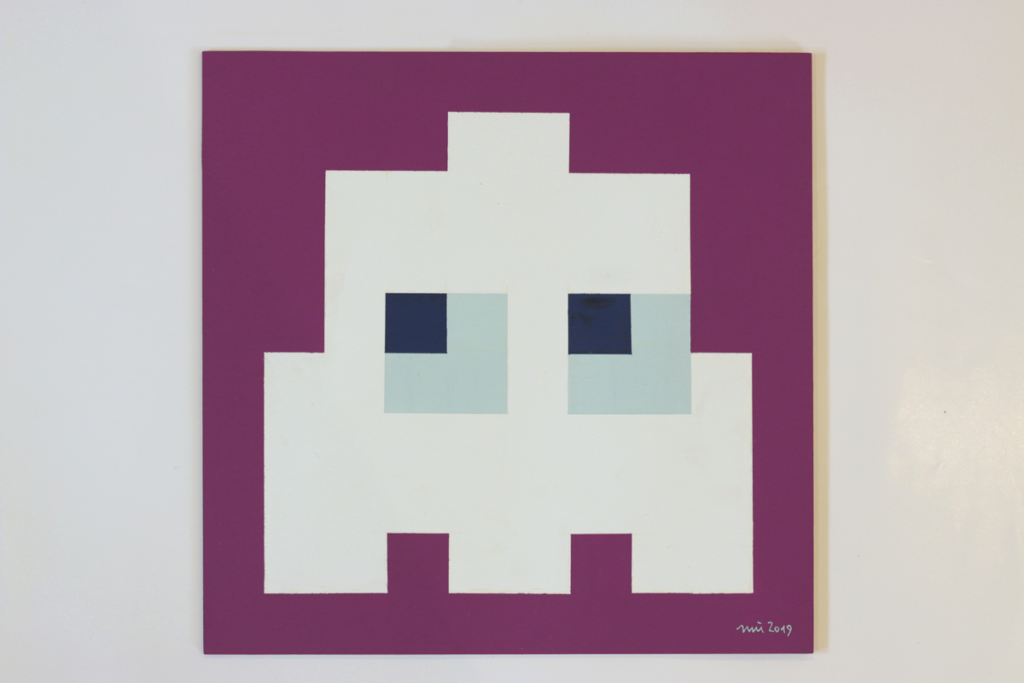
Sieg, 30 x 30 cm, 2019. 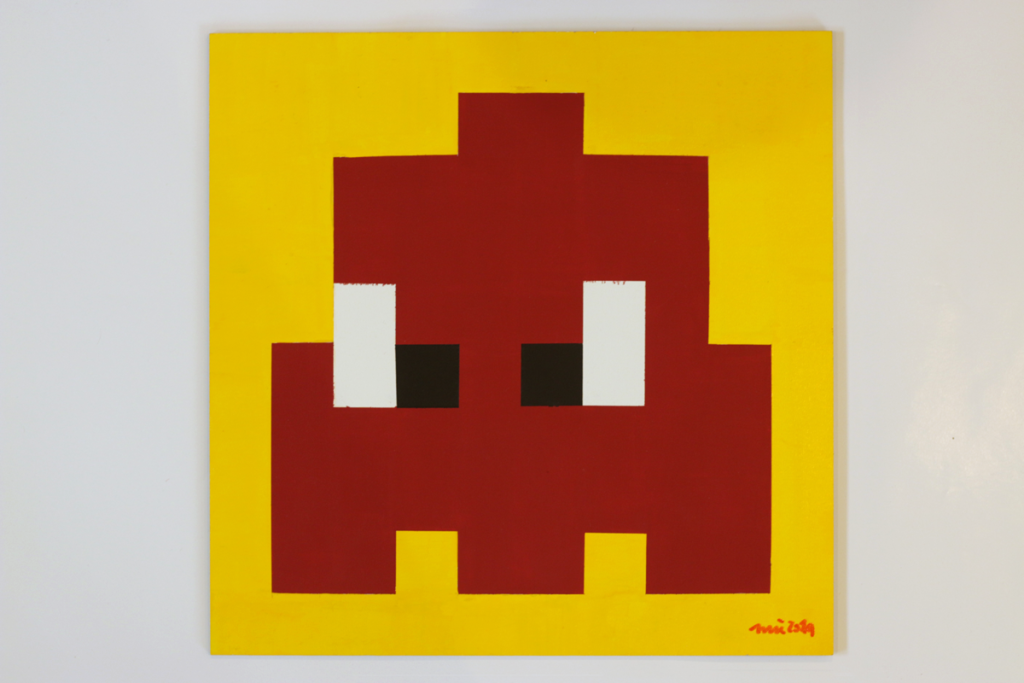
Krieg, 30 x 30 cm, 2019. 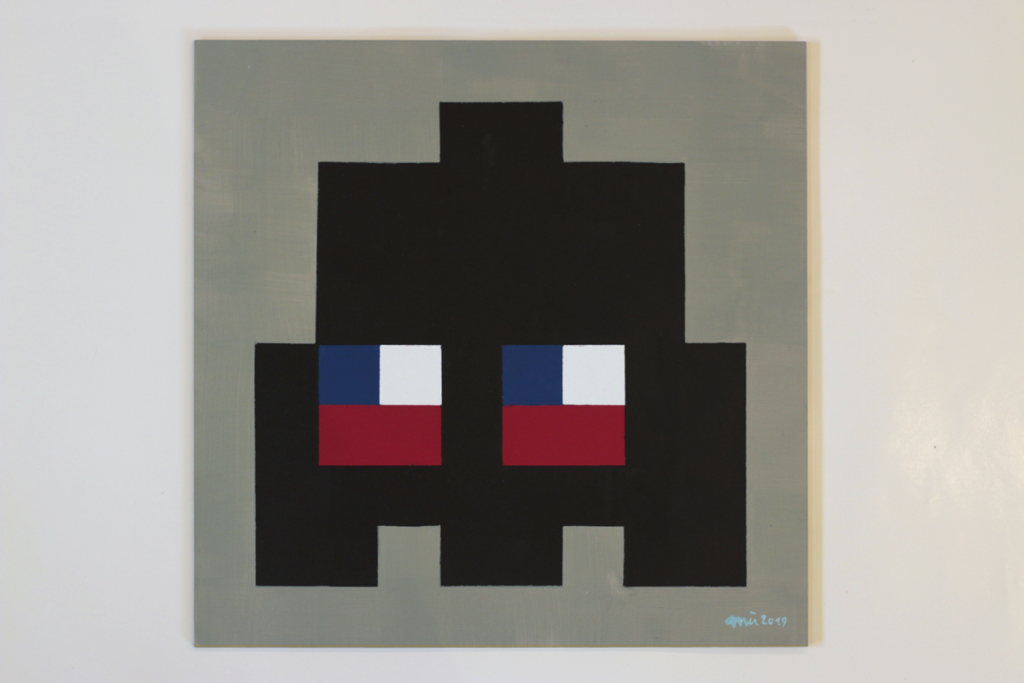
Hungersnot, 30 x 30 cm, 2019. 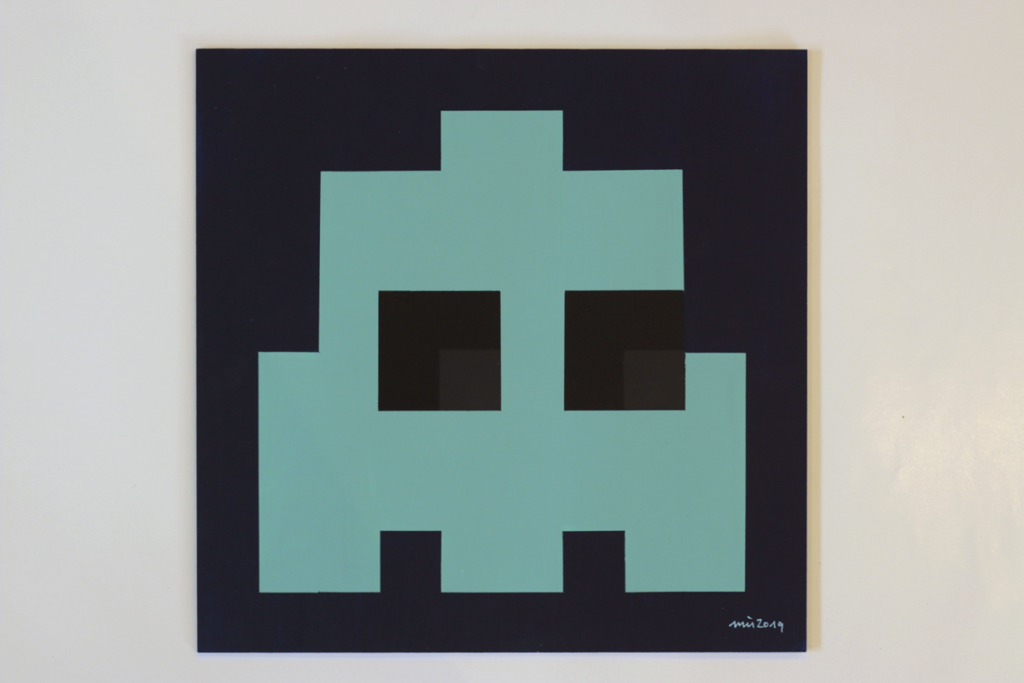
Tod, 30 x 30 cm, 2019.
Sicht der Dinge (perspectives) is another tetraptych about the mental power of resolution. In this particular work, a pin represents the power of memory, while the four stages (using four major graphic resolutions that happened during the 1980s on PCs in clockwise direction). depicted show, how memories are differently rendered, according to the quality of resolution.
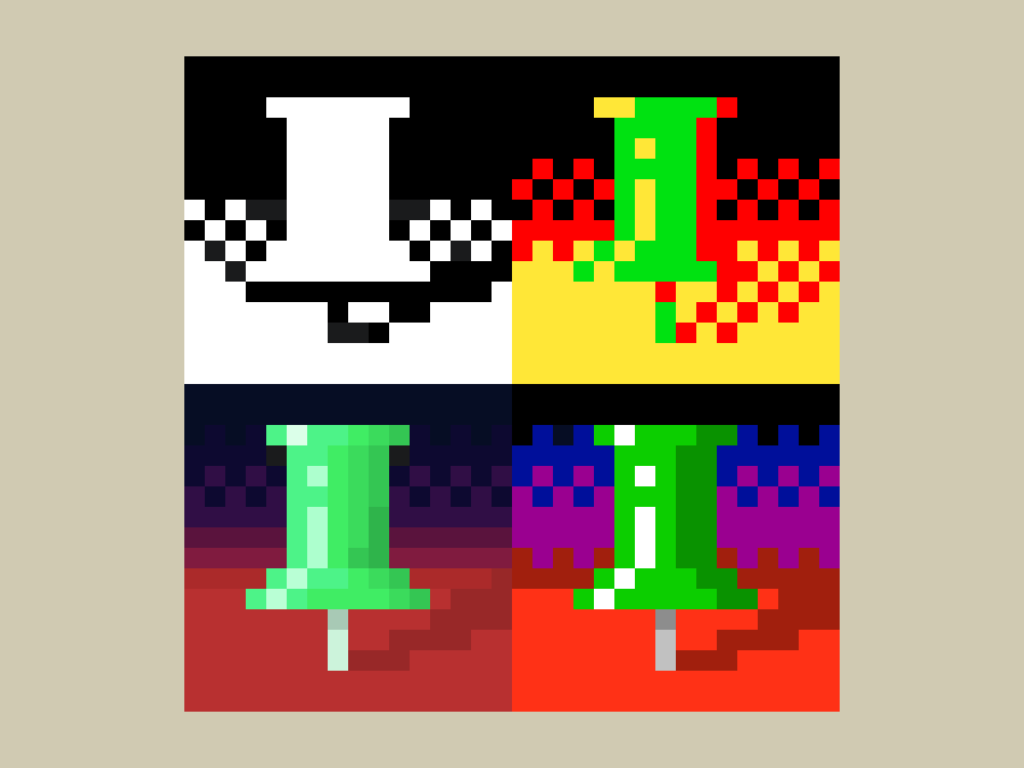
Sicht der Dinge (MGA, CGA, EGA, VGA), digital sketch, 2019.
Symbolism is awesome. I can access subconscious themes and put them in a shape others might decode or just like the colors. There’s more of that in different techniques: Check out my sculptures and the pretty spiritual stuff called pixelethics. And yes, if you’re interested in aquiring a piece, lets get in touch!
